You’ve probably encountered white bugs on plants in your gardening endeavor. It’s likely the reason why you’re here reading this post.
We’ve all faced this, whether growing houseplants such as succulents, citrus, or outdoor tomato-related plants.
It’s even worse when you don’t know what those white bugs are.
Lucky for you, in this post, I will share how you can identify the specific bugs and how to get rid of them quickly.
You can quickly establish the bug's identity by looking at its appearance.
For instance, are they fuzzy or fluffy? Are they sticky or tiny? Are they on the soil or flying around when you touch the plant?
As we shall learn in the rest of this article, white bugs on houseplants could be mealybugs, whiteflies, scale Insects, soil mites, or root aphids.
If this summary sounds like something you’d want to read about, then let’s get to it:
How to Identify and Get Rid of White Bugs on Plants
Monitoring and Identification
You should regularly check your plants for any pests present and take note of the quantity. Also, take note of how widespread the problem is from one houseplant to the other. This initial activity serves two purposes.
First, you’ll be able to detect pest problems early enough and take the necessary control measures before any severe infestation or damage to your plants.
Secondly, just because there are white bugs all over your plant doesn’t necessarily mean it’s a bad thing. ,
Therefore, close observation helps you tell apart the good and bugs.
The most common whitish bugs on plants are mealybugs, whiteflies, scales, and root aphids.
Mealybugs and root aphids look alike since they are fluffy and cottony, but the latter is found on the soil surface and around the root area.
If you touch the plant and observe flying white bugs, those are whiteflies. In comparison, the sticky, whitish-looking bugs could be insect scales.
Having this information is crucial to help you make a proper identification.
Next, we look at each bug and control them.
Mealybugs
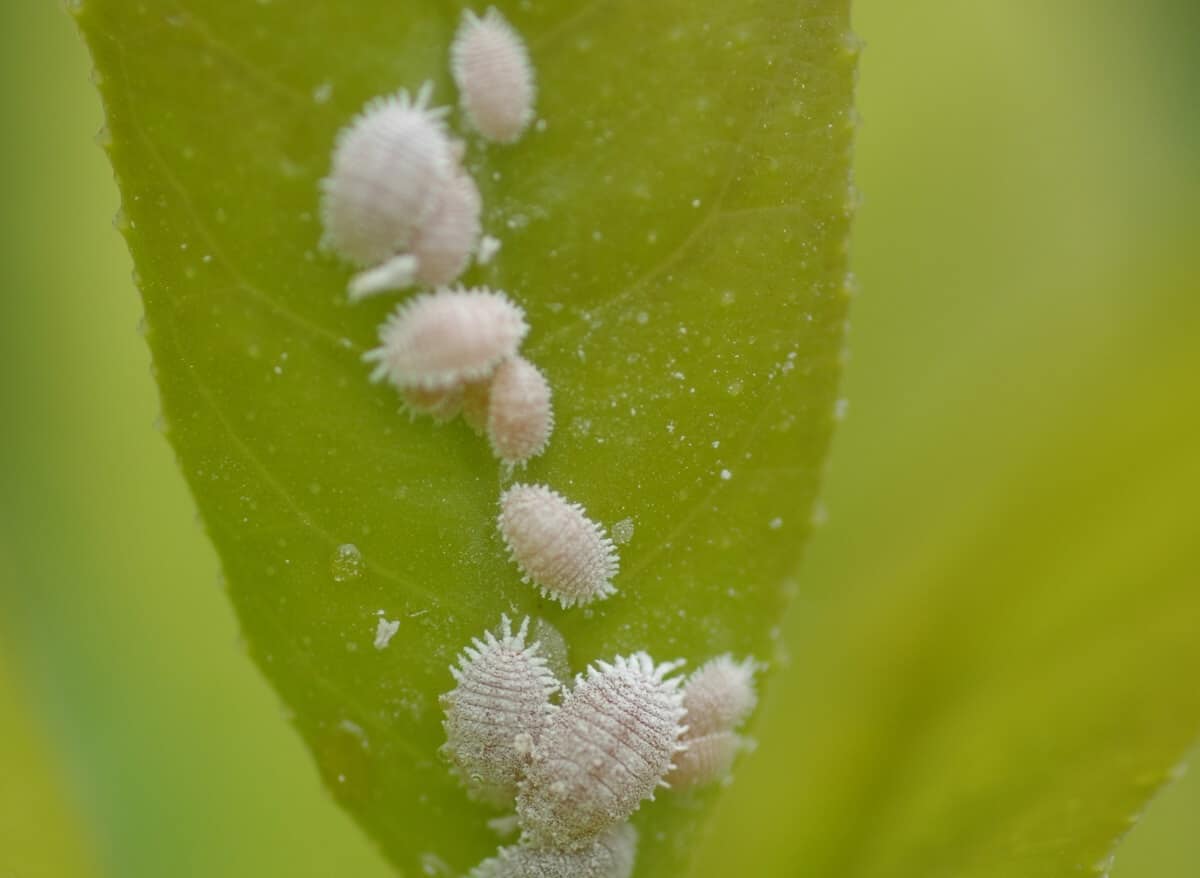
Mealybugs are small, fluffy-looking bugs that move sluggishly and are easily recognizable. They look like tiny white puffs of cotton or fluffy deposits of white powder.
The adult females cover themselves and their eggs with white, waxy material, making them look cottony.
You’ll realize controlling mealybugs is pretty challenging as their wax helps repel most pesticides.
When looking at your plants for the presence of mealybugs, please check the underside since they are most commonly found on the lower surfaces of leaves and leaf axils (where the leaf attaches to the stem).
What makes these fluffy white bugs dangerous is the fact that they suck plant sap, causing stunted and distorted growth and sometimes plant death.
Like aphids, they excrete honeydew, providing the opportunity for the growth of sooty mold fungi.
You’ll often find mealybugs on African violets, plants in the citrus family, Ficus, jade, gardenia, poinsettia, and other indoor plants. While most sprays don’t work on mealybugs, several other ways exist to control these notorious bugs.
Let’s check them out:
How to Get Rid of Mealybugs
Improve your plant’s growing conditions – most bugs, including mealybugs, have a strong sense of a weak plant. Therefore, ensure your plants have optimal growing conditions to promote vigorous growth.
Discard the affected plants - Depending on the severity of the infestation, consider discarding the affected plants to avoid the spread only if the plant is precious, which may warrant the trouble involved.
Individually remove the mealybugs by hand or cotton swab – the advantage of regularly monitoring the plants is that you can detect and eliminate the bugs earlier. For instance, you can rub the light infestation with your hands (wear gloves), or a cotton swab dipped in alcohol.
Use an insecticidal soap or neem oil extract – as a last resort, you may consider spraying these products. What I like about insecticidal soap is that it’s natural and can penetrate waxy substances, thus exposing the bugs to insecticide.
Pro Tip: Always follow the instructions on the insecticide’s label to the T.
Whiteflies
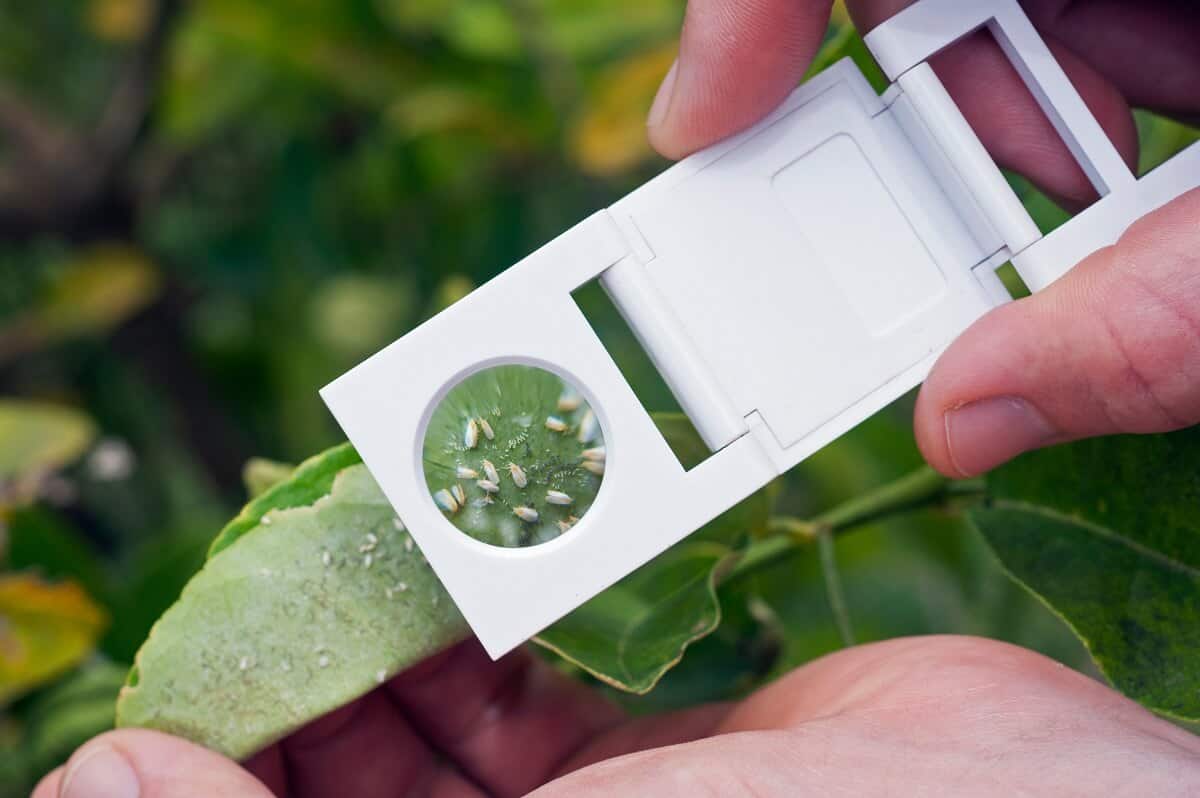
Whiteflies are soft-bodied, winged insects closely related to mealybugs and aphids. They are somewhat triangular-shaped and can be as small as 1/12 of an inch.
These insects are often found in clusters on the undersides of leaves.
Whiteflies are often described as fuzzy white bugs on plants with a powdery white appearance and resemble tiny moths.
When at rest, the wings are held at an angle, roof-like over the body. The immature stage is scale-like and does not move.
They can be found indoors in USDA zone 7 and the colder regions or outdoors as seasonal outdoor pests (happens when you purchase outdoor plants from an infected source).
On the other hand, in warmer areas, whiteflies are a nuisance both indoors and outdoors as they can overwinter and reproduce outdoors all year round.
Whiteflies usually appear in mid to late summer when the environment is humid and warm.
Both the adults and their immature forms feed by sucking plant sap. Whiteflies cause damage similar to that of aphids. When you touch through the leaves of whiteflies-infested plants, they will flutter around for a while before settling again.
If you don’t take the necessary control measures, your plants may be stunted, leaves may turn yellow, and with heavy infestation – plants may die. Like aphids, whiteflies excrete honeydew, making leaves shiny and sticky, encouraging ants’ infestation and the growth of sooty mold fungi.
You can use some of the strategies used to control aphids, such as ant control to deal with whiteflies problem. We also have an elaborate guide on how to control the whiteflies.
Therefore, instead of repeating it, let me drop the link here – how to get rid of whiteflies at home.
Insect scales
Most gardeners are not very familiar with insect scales.
This is because they are less common than mealybugs, whiteflies, and aphids. Two species of scales may appear on your houseplants. The armored and soft scales appear whitish to creamish in color or even black.
An armored scale secretes a waxy covering that is not integral to its body.
The covering can be scraped off to locate the insect living beneath it. In contrast, the waxy covering that a soft scale secretes is an integral part of its body.
Adult insect scales are small and immobile, with no visible legs. They are flat like fish scales stuck on the plant’s leaves. Like mealybugs, the soft-bodied scales secrete honeydew, which causes sooty mold problems in plants.
When inspecting your plants, you’ll usually find them on stems and the undersides of leaves, but you may also see them on the upper surfaces. If not controlled, they will sack the sap of the plants dry.
How to get rid of insect scales
Individually scrap the scales with a flat and sharp object – this may only apply to an early infestation when the numbers are not much.
Throw away heavily infested plants – adult scales are often protected by a shield of waxy covering, making their control a nightmare, especially if the plant is heavily infested. The best approach is to discard all the affected plants.
Spray with natural insecticides - For most indoor and outdoor plants, you need to spray with products containing neem oil extract or canola oil which will help control adult-scale insects by smothering. Their crawlers are susceptible to many insecticides, such as insecticidal soap, neem oil extract, and canola oil.
Root Aphids
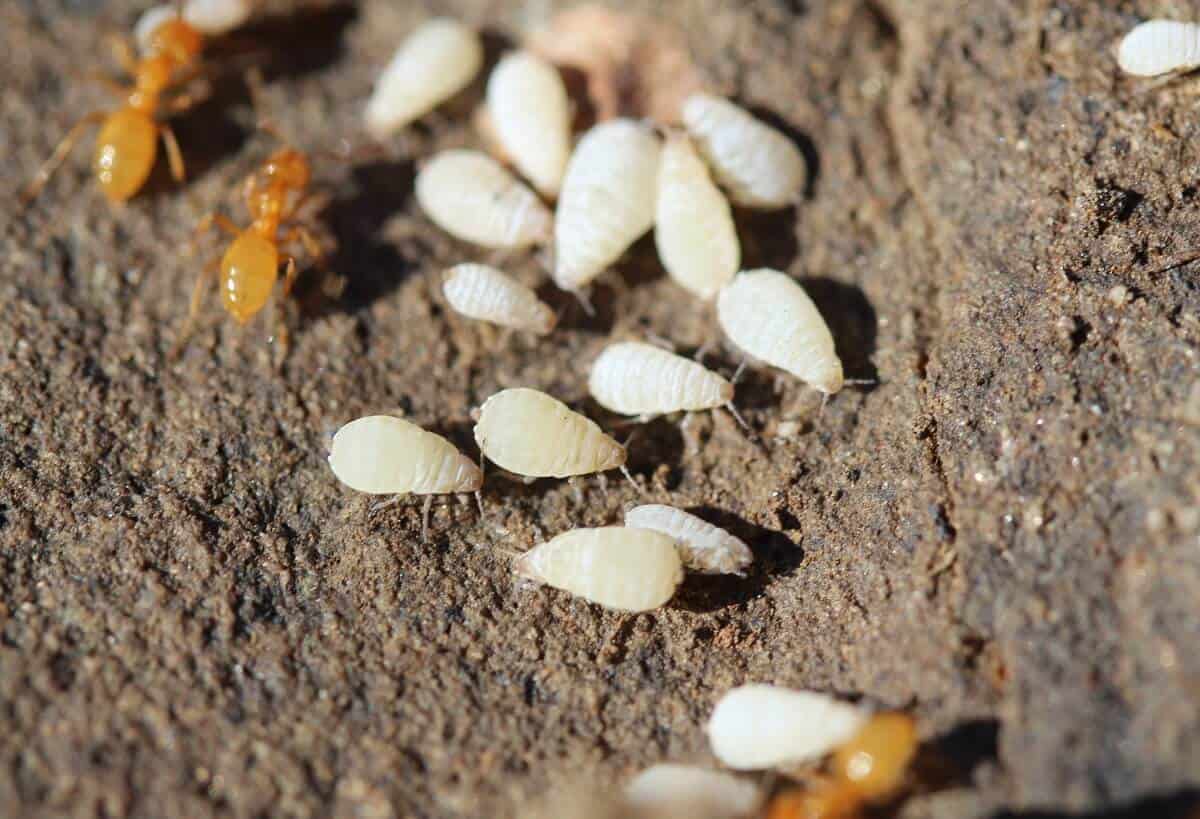
Root aphids, also known as Pemphigus species, are often misidentified as mealybugs due to their waxy covering.
In reality, they’re smaller than mealybugs and are primarily white.
The adult root aphids look like the usual ones on the leaves, except most are pear-shaped and have shorter antennae and legs.
Most root aphids have cornicles, or “tailpipes,” protruding from the end of the abdomen, like their aboveground counterparts.
They don’t move as fast as their upper plant counterparts, but they’re easily spread from one container to the next through container drainage holes during watering.
As the name suggests, these are found around the root zone of plants, and when the infestation increases, you may see them on top of the houseplant soil.
Root aphids feed on the plant roots, and if you don’t take action, the plants may begin to turn yellow, wilt, or die in severe cases.
These wingless “crawlers” do not move as quickly as their aboveground counterparts but can still spread from container to container through the drainage holes: they can either crawl from pot to pot or be carried by irrigation water.
They can also be transferred in growing medium debris or on equipment.
How to get rid of root aphids
Regarding root aphids, the primary source of infestation is other infested plants.
So, you should be able to isolate infested plants as soon as you spot them.
Furthermore, since the sprays don’t necessarily help (check out the resources section at the end of this article to find out why this is the case), you need to pay attention to the following:
- Keep in mind that prevention is the best control strategy.
- Clean and thoroughly disinfect old container pot planters before reusing them.
- Avoid reusing old potting soil; instead, get a fresh mix for each plant.
- Don’t let irrigation water flow to other container plants as much as possible.
- Thoroughly wash equipment before using them.
If you follow these simple guidelines, root aphids won’t be a problem.
Conclusion
You’ve just read how to identify and eliminate white bugs on plants.
The reason why it’s crucial to do an accurate identification is because each insect requires a different control strategy based on its appearance.
You’ve also discovered that prevention is the best strategy to manage pests on your plants.
Therefore, paying attention to cultural practices such as proper feeding regimes, good watering practices, using commercial pot mixes instead of garden soil, and cleaning and disinfecting your pots is essential.
But you can also use naturally recommended insecticides as a final resort.
Do these things, and you won’t have problems with those nasty bugs ever again.
While at it, don’t forget to have fun – you deserve it! Let me know your thoughts in the comments.
Editor's Note: This post was originally published on April 22, 2021, and has been revamped and updated for accuracy, grammar, and comprehensiveness
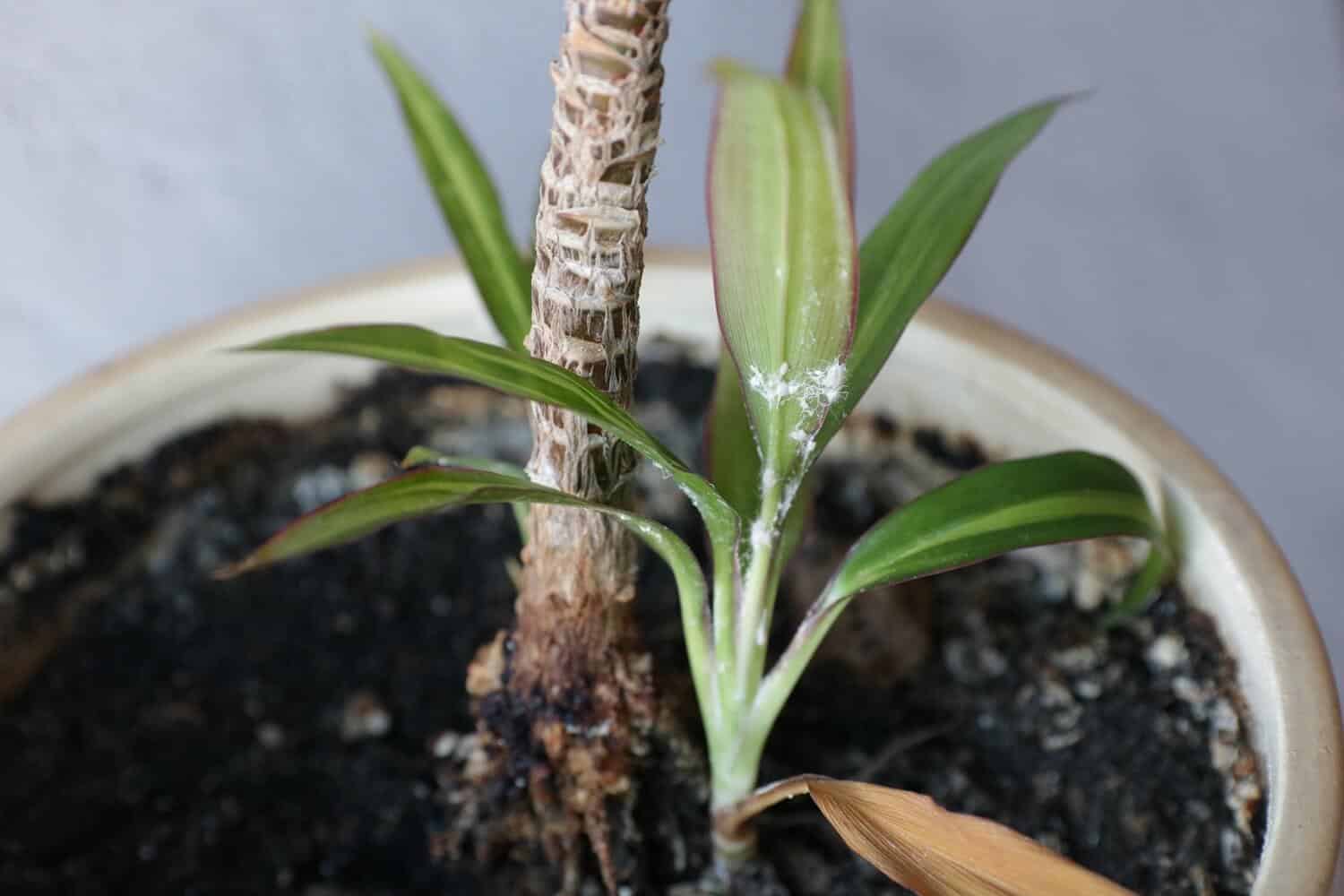
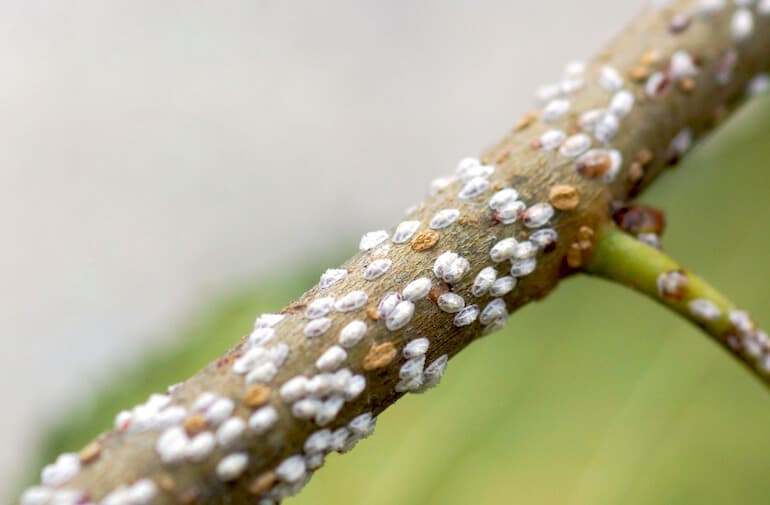
What kind of bug are in the main article picture? and if they aren’t listed below, how can I get rid of them? Thanks!
Hello Nina, those are mealybugs on the featured image. You can find explanation on how to get rid of them in the article. Thanks for asking…